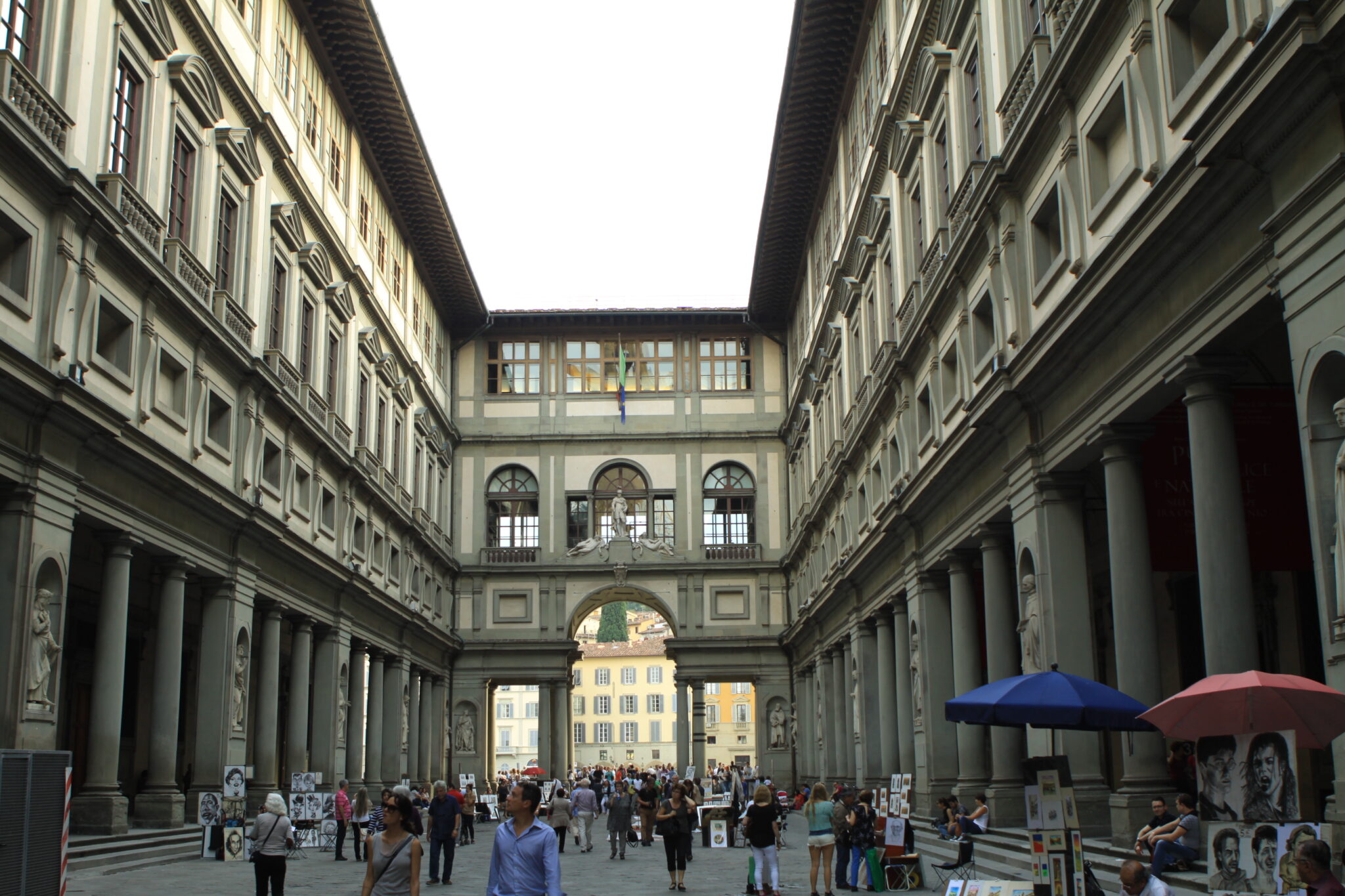Galleria degli Uffizi – Florence
The building that houses the Uffizi Gallery, one of the most visited museums in the world, was built in 1560 by order of Cosimo I de Medici, and designed by Giorgio Vasari.
The unusual building, whose architecture constists of “U” plan consisting of two corridors or side “wings” resting on two long porches and a short facade overlooking the Arno River, was initially coincived for civil and functional use: hence the name “Uffizi”, underlining the function of the new seat of the offices of the Magistrature, placed under the direct control of the Grand Duke who lived in Palazzo della Signoria, the building just in front of the Uffizi.
Cosimo’s son, Francesco I, decided to set up a small octagonal room inspired by his alchemical researches linked to the four natural elements on the second floor of one of the corridors; soon after, the first core of the collection of works of art of the family is transferred here.
His successors would follow his lead and gradually store here other masterpieces, up to constitute a real private gallery, visitable, at the time, only from a small elite of people, and only having previously submitted a written request. When the last heir, Anna Maria Luisa de Medici, tied the heritage to the city, the Uffizi became a public museum, officially opening its doors to public in 1765.
The Gallery, which is part of the circuit of the Florentine State Museums, currently houses a collection of works ranging from antiquity to contemporary times, with a focus on Florentine painting of the fifteenth and sixteenth centuries, including masterpieces such as the Majesty of Giotto, Botticelli’s Birth of Venus and Primavera, Michelangelo’s Tondo Doni, Leonardo Da Vinci’s Adoration and Caravaggio’s Medusa.











